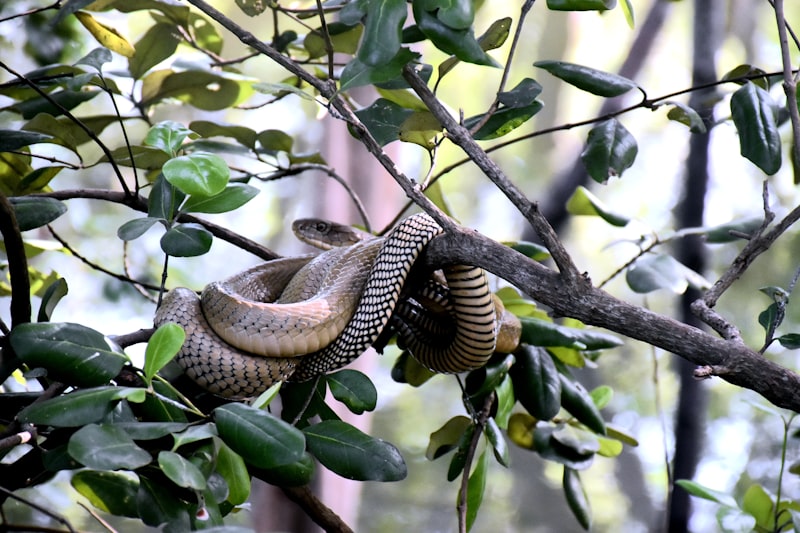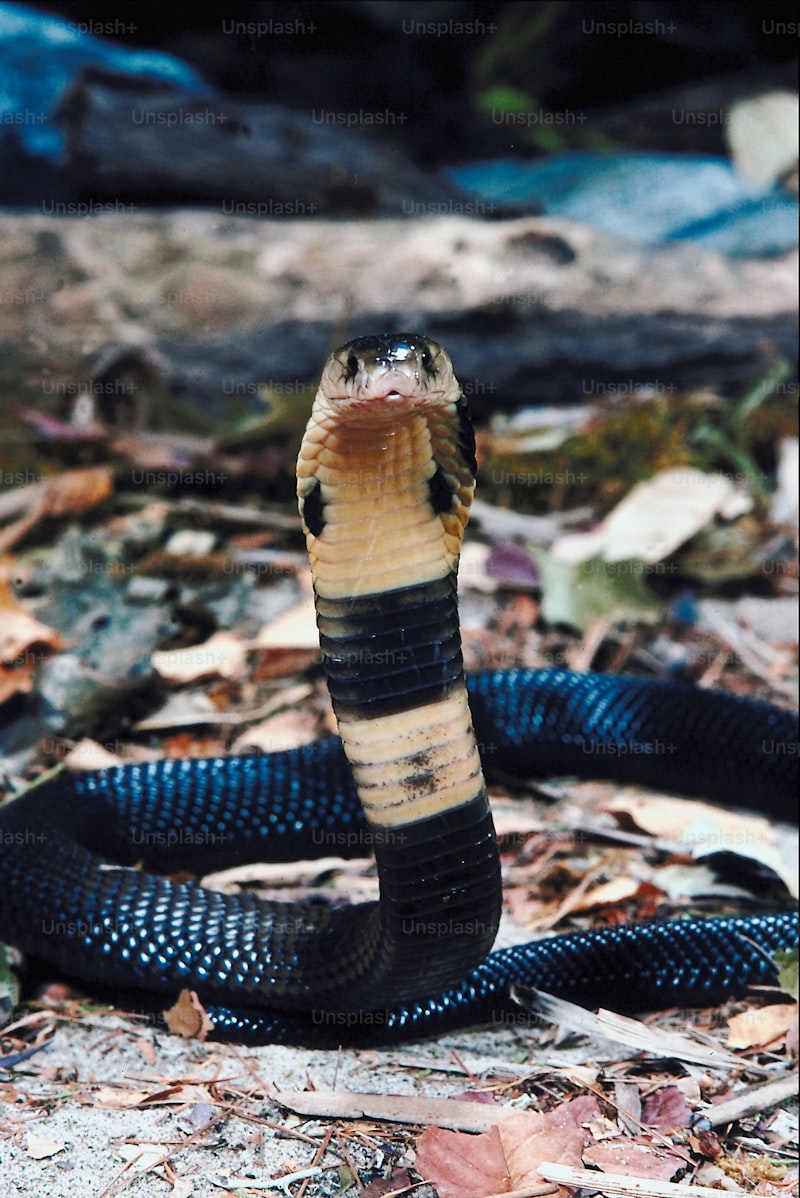Venomous snakes vary greatly in appearance and behavior, spanning continents from the rattlesnakes of North America to the deadly cobras of Asia and Africa. Their venom, a potent cocktail of proteins and enzymes, serves both as a hunting tool and a defense mechanism. Each species has evolved distinct adaptations for survival, reflecting their environments and prey.
Safety around venomous snakes begins with awareness. Identifying the species in your area is essential, as behaviors and habitats differ significantly. For example, pit vipers like rattlesnakes prefer dry, rocky terrain, while elapids such as cobras thrive in diverse habitats from forests to urban areas. Learning to recognize warning signs like rattle sounds or hood displays can prevent accidental encounters.
Encounters with venomous snakes, though rare, can be dangerous. If bitten, swift and appropriate action is crucial. First aid protocols include immobilizing the affected limb, keeping it below heart level, and seeking immediate medical attention. Antivenom, specifically developed to counteract snake venom, is administered by healthcare professionals based on the snake species involved.
Despite their fearsome reputation, venomous snakes play vital roles in ecosystems by controlling prey populations and maintaining biodiversity. Conservation efforts often focus on protecting these species while promoting public safety through education and habitat management.
Understanding venomous snakes involves appreciating their evolutionary adaptations and ecological importance while prioritizing safety measures in their presence. By respecting their habitats and behaviors, humans can coexist safely with these remarkable yet potentially dangerous reptiles.
Unveiling Nature’s Bite: The Truth About Venomous Snakes
Venomous snakes have long fascinated and frightened humans with their deadly capabilities. These creatures, found across various habitats worldwide, possess venom that they use primarily for hunting prey and defending themselves against predators. Understanding the nature of venomous snakes is crucial for anyone living or traveling in regions where they reside.
One of the most intriguing aspects of venomous snakes is their diverse adaptations. Each species has evolved unique venom compositions suited to its hunting strategies. For instance, some snakes, like the deadly Black Mamba of Africa, produce neurotoxic venom that swiftly paralyzes their prey. In contrast, others, such as the Russell’s viper in Asia, deliver hemotoxic venom that disrupts blood clotting, leading to internal bleeding in victims.
Despite their fearsome reputation, venomous snakes typically avoid human encounters unless threatened or cornered. They play a vital ecological role by controlling populations of rodents and other small animals, thus maintaining the balance of their ecosystems.
Identifying venomous snakes can be challenging due to their resemblance to non-venomous species. However, certain visual cues, like the shape of their pupils (often elliptical in venomous snakes versus round in non-venomous ones), and specialized coloring patterns, can help distinguish them. Additionally, behavioral signs, such as a defensive posture or a warning hiss, indicate when a snake feels threatened and may strike if provoked.

In areas where venomous snakes are prevalent, education and awareness are key for safety. Knowing basic first aid for snake bites, such as keeping calm and immobilizing the affected limb, can significantly improve outcomes before professional medical help arrives. Local wildlife authorities often provide resources and guidelines on how to coexist safely with these fascinating yet potentially dangerous reptiles.
Venomous snakes remain a subject of both fear and admiration, their role in ecosystems underscoring the intricate balance of nature. By respecting their habitats and understanding their behavior, humans can foster a harmonious relationship with these remarkable creatures.
Surviving Venom: Key Safety Tips for Encounters with Snakes
Firstly, remain calm. Upon spotting a snake, it’s natural to feel startled, but staying calm is key. Avoid sudden movements that could startle the snake or provoke an attack.
Secondly, give space. Most snakes will not attack unless they feel threatened. Back away slowly and cautiously to create distance between yourself and the snake. Remember, the snake is likely more scared of you than you are of it.
Thirdly, identify from a safe distance. Attempt to identify the snake from a safe distance. Knowing the type of snake can be crucial for medical professionals in case of a bite.
Fourthly, do not provoke. Never attempt to handle or provoke a snake, even if you believe it to be non-venomous. Snakes can strike suddenly and accurately when agitated or threatened.
Fifthly, wear appropriate footwear. When walking in areas where snakes may be present, wear sturdy boots or closed shoes. This reduces the risk of a snakebite if you accidentally step on a hidden snake.
Lastly, seek medical attention immediately. If bitten, remain as still as possible to slow the spread of venom. Remove any tight clothing or jewelry near the bite area. Call emergency services or get to the nearest medical facility promptly for treatment.
Encounters with snakes can be alarming, but with these safety tips, you can effectively reduce the risks associated with such encounters. Stay vigilant and prepared when exploring nature or encountering wildlife, ensuring both your safety and the well-being of any snakes you may encounter.
Deadly Beauty: Exploring the World of Venomous Snakes
Venomous snakes are marvels of adaptation, finely tuned over millennia to survive and thrive in diverse environments around the globe. From the deadly taipan of Australia to the elusive black mamba of Africa, each species possesses its own unique blend of toxins designed for predation and defense. These adaptations underscore their evolutionary success, where venom has become a specialized tool for securing prey and deterring threats.
Beyond their fearsome reputation, venomous snakes offer a profound study in biological marvels. Their venom, a complex cocktail of proteins and enzymes, can incapacitate prey swiftly or inflict fatal wounds on predators. The sophistication of this venomous arsenal is a testament to nature’s ingenuity, honed through relentless adaptation and natural selection.
In regions where venomous snakes thrive, local communities have developed deep respect and sometimes intricate folklore around these creatures. Their presence in ecosystems serves as a balance, controlling populations of pests and contributing to the biodiversity of their habitats.
Despite their lethal capabilities, venomous snakes rarely pose a significant threat to humans when left undisturbed. Most snake bites occur when people inadvertently encroach upon their territory or mishandle them. Understanding their behavior and habitats is crucial for fostering coexistence and mitigating unnecessary conflicts.
Beyond Fangs: The Science Behind Venomous Snake Bites
Each venomous snake species has evolved its venom composition to suit its hunting or defense needs. For example, some venoms paralyze prey, while others cause tissue damage or disrupt blood clotting. This specialization allows snakes to efficiently incapacitate or kill their prey, ensuring a meal and survival in harsh environments.
Scientists study venom composition meticulously, uncovering potential medical applications. Components of snake venom show promise in developing treatments for various human ailments, such as heart conditions and neurological disorders. By understanding how venom works at a molecular level, researchers aim to harness its therapeutic potential while mitigating its deadly effects.

Snakebite treatment revolves around administering antivenom, a serum containing antibodies that neutralize venom toxins. Prompt medical intervention is crucial, as venom can rapidly spread through the bloodstream, leading to severe symptoms or even death in untreated cases.
Beyond its medical implications, venomous snake biology underscores the intricate balance of ecosystems. Snakes play vital roles in controlling prey populations, contributing to biodiversity and ecological stability. Their venomous adaptations highlight nature’s evolutionary marvels, showcasing survival strategies honed over millions of years.
Know Your Enemy: Identifying Venomous Snakes in the Wild
Ever wondered how to distinguish between harmless snakes and those that can pose a serious threat? In the wild, knowing your enemy is crucial for staying safe, especially when it comes to venomous snakes. Let’s delve into the key characteristics that can help you identify them.
One of the most reliable ways to differentiate venomous snakes from non-venomous ones is by examining their heads. Venomous snakes typically have triangular heads with a distinct bulge right behind their eyes. This shape is due to the venom glands located there, which are absent in non-venomous species. Think of it like identifying a dangerous predator by its sharp claws – in this case, the venom glands are the ‘claws’ of the snake world.
Another important feature to look for is the snake’s eyes. Venomous snakes often have elliptical pupils like a cat’s, whereas non-venomous snakes generally have round pupils. This distinction is not always straightforward, but it can provide a clue when trying to assess the potential danger of an encounter.
Coloration and patterns on the snake’s body also play a role in identification. While many non-venomous snakes mimic the color patterns of venomous ones to ward off predators, some general rules can still apply. Brightly colored snakes, especially those with red, yellow, or orange bands, are often venomous. However, this rule is not universal, so it’s essential to combine coloration with other identifying features.
The shape of the snake’s scales can be another indicator. Venomous snakes typically have scales that are keeled, meaning they have a ridge down the center that gives them a rough texture. Non-venomous snakes usually have smooth scales. Running your finger gently along the snake’s back can help you feel for these differences.
Lastly, consider the habitat where you encounter the snake. Some venomous species have specific geographic ranges, so knowing which snakes are common in your area can narrow down possibilities.
Venomous Snakes in North America: Where They Hide and How to Stay Safe
Rattlesnakes, with their distinctive rattle at the end of their tails, are masters of camouflage. They often coil up near rocky outcrops or in tall grass, waiting silently for unsuspecting prey. Their venomous bite can be dangerous, but they typically warn intruders with their distinctive sound.
Copperheads, named for their reddish-brown heads, prefer wooded areas and rocky hillsides. They blend in effortlessly with fallen leaves and underbrush, making them hard to spot. Their bites, though rarely fatal to humans, can cause significant pain and swelling.
Cottonmouths, also known as water moccasins, are semi-aquatic and favor swamps, marshes, and slow-moving streams. They can swim and are often found near water, camouflaged among debris or floating vegetation. Their bites are venomous and should be treated immediately.
To stay safe from venomous snakes, awareness is key. Always watch where you step, especially in tall grass, under rocks, or near water. Wear sturdy boots and long pants when hiking or exploring snake-prone areas. Avoid placing your hands or feet in places you can’t see, like rock crevices or holes in the ground.
If you encounter a venomous snake, remain calm and slowly back away. Snakes will usually retreat if given space. Never attempt to handle or provoke a snake, as this increases the risk of being bitten.
Being informed about venomous snakes and their habitats enhances outdoor experiences while minimizing risks. By respecting their presence and staying vigilant, adventurers can enjoy nature safely and confidently.
Frequently Asked Questions
Where can I find reliable information about venomous snakes?
Looking for reliable information about venomous snakes? Discover trusted resources online, including reputable wildlife organizations, government websites, and herpetology experts. These sources provide accurate details on identification, habitats, behaviors, and safety tips when encountering venomous snakes.
How can I stay safe from venomous snakes in my area?
Learn effective ways to stay safe from venomous snakes in your area with our concise guide. Discover essential tips on snake awareness, habitat avoidance, and appropriate actions if you encounter one.
What are venomous snakes and how can I identify them?
Learn how to identify venomous snakes with our concise guide. Discover key characteristics and behaviors that distinguish them from non-venomous species, ensuring your safety in snake-prone areas.
What are the common myths about venomous snakes?
Discover common myths about venomous snakes with our concise FAQ. Learn the truth behind misconceptions like ‘all snakes with triangular heads are venomous’ and ‘all venomous snakes have slit-like pupils’. Clarify your understanding to stay safe and informed in snake habitats.
What should I do if bitten by a venomous snake?
Learn immediate actions to take if bitten by a venomous snake, including keeping calm, immobilizing the affected limb, seeking medical help urgently, and avoiding any unnecessary movement.


